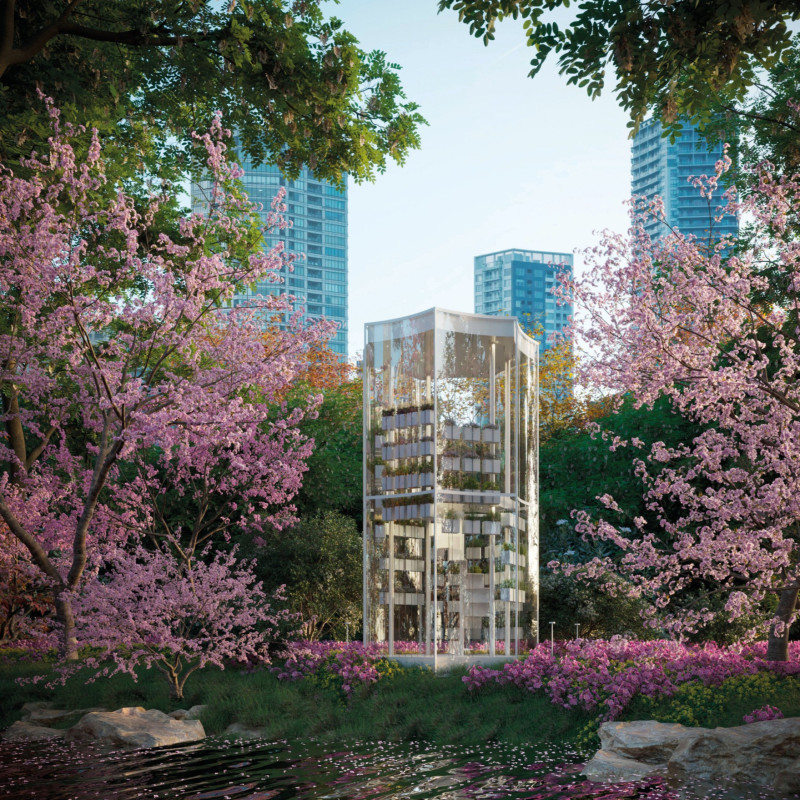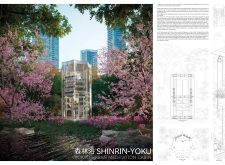5 key facts about this project
The Shinrin-yoku Tokyo Urban Meditation Cabin exists as a peaceful space within the busy city of Tokyo. Focused on the idea of "forest bathing," this design invites individuals to connect more deeply with nature. It functions as both a meditation area and a social hub, providing an escape from urban stress. The overall concept emphasizes well-being through engagement with the natural environment.
Design Elements
-
The cabin is designed with a vertical garden system, featuring multiple levels of hanging pots filled with aromatic, medicinal, and therapeutic plants. This approach allows users to interact with the environment on many levels. They can rearrange the plants to match their personal preferences and the changing seasons. A manual pulley and winch system allows for easy elevation of the pots, making the experience more hands-on and engaging.
Spatial Configuration
-
The entrance is at ground level, making it accessible for everyone. Once inside, users can open downward-facing windows that let in fresh air and natural sounds. This connection to the outside environment enhances the calming atmosphere. By focusing on these elements, the design seeks to reduce urban-related stress, like anxiety and pressure, through meaningful engagement with nature.
Structural Integrity
-
The cabin includes integrated support mechanisms that provide both vertical and horizontal stability. In the attic space, compartments serve useful functions, such as rainwater collection through systems installed in the pillars. Such features demonstrate awareness of sustainability and responsible resource use. Additional compartments are also available for storing a watering can and the winch handle, encouraging users to share responsibility for the space.
Aesthetic Connection
-
The cabin blends the benefits of nature with practical design. Users can interact with the hanging pots and enjoy the scents and textures of the plants. This tactile engagement fosters a sense of community and mindfulness. The thoughtfully arranged greenery creates a welcoming environment. In this space, visitors can reflect, take a breath, and momentarily step away from the fast pace of city life. This interaction helps highlight the importance of nature in everyday routines.



















































